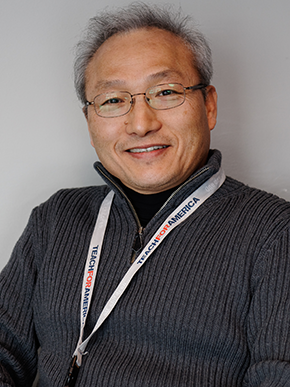Abstract—Under the development trend of artificial intelligence, biometrics has become a broadly applied popular technology in various situations, such as finance, non-profit organizations, and customs. However, traditional identification tools existed in the risks of being easily leaked out, stolen, or attack by hackers. Electroencephalography (EEG), a method for research on biometrics, collects electromagnetic waves on specific positions on the scalp and reflects individual brain activity. Much research proved that α band in EEG could distinguish individual differences, and the significance was proven in clinical neurophysiology. In EEG biometrics, complicated electrode channels were used in most research to cover the entire head for collecting brainwave records; however, such equipment could not satisfy the requirement for collectability in biometrics applications. This study develops an individual specific verification model with brainwaves through Convolutional Neural Network (CNN) for identity identification to protect biometric data of the athletes. Brainwave features are selected from 2 minutes static brainwave signals of participants collected by handy EEG through the Butterworth Low Pass Filter (BLPF) and Short-time Fourier Transform (STFT), and the verification evaluation model is developed by comparing several machine learning classifiers and the deep learning CNN model. To solve the imbalance problem between personal data and general data, the Synthetic Minority Oversampling Technique (SMOTE) is adopted to achieve favorable effects in various model evaluation indicators. In the individual specific model, the selection of brainwave features at 2 second reveals the accuracy of 96.80%.
Index Terms—Electroencephalography, convolutional neural network, butterworth low pass filter, short-time fourier transform.
Meng-Hsiun Tsai, Chi-Yuan Hsia, and Tzu-Ling Chen are with National Chung-Hsing University, Taichung, Taiwan (e-mail: mht@nchu.edu.tw). Sheng K Wu is with National Taiwan University of Sport.
[PDF]
Cite:Meng-Hsiun Tsai, Chi-Yuan Hsia, Sheng K Wu, and Tzu-Ling Chen, "An Individual Specific Electroencephalography Signal Pattern Verification Model Based on Machine Learning and Convolutional Neural Network," Journal of Advances in Computer Networks vol. 8, no. 1, pp. 1-9, 2020.
Copyright © 2020 by the authors. This is an open access article distributed under the Creative Commons Attribution License which permits unrestricted use, distribution, and reproduction in any medium, provided the original work is properly cited (
CC BY 4.0).


